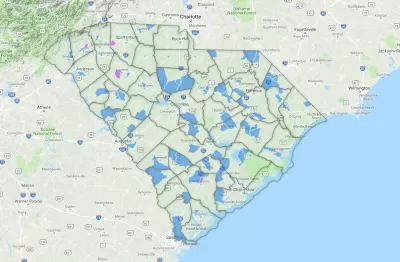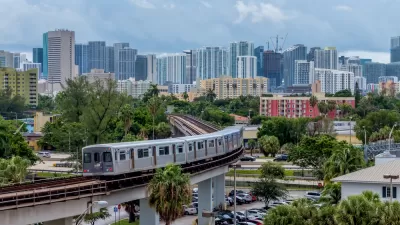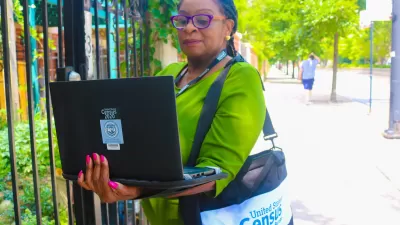Down to the level of individual census tracts, a team of researchers has developed national maps showing where upward mobility is probable, and where it isn't.

Hearkening back to demographic researcher Dustin Cable's Racial Dot Map, a team of researchers including Harvard's Raj Chetty have worked with the U.S. Census Bureau to assemble a compressive picture of which neighborhoods tend to foster children who get ahead, and which fail to do so.
The Opportunity Atlas, an interactive mapping tool, allows users to pinpoint specific census districts for comparison with the surrounding area, or zoom upward to see how counties and regions fare. According to reporting by Emily Badger and Quoctrung Bui, "for any government program or community grant that targets a specific place, this data proposes a better way to pick those places — one based not on neighborhood poverty levels, but on whether we expect children will escape poverty as adults."
The researchers, who in addition to Chetty include Nathaniel Hendren at Harvard, John N. Friedman at Brown University, and Maggie R. Jones and Sonya R. Porter at the Census Bureau, "believe much of this variation is driven by the neighborhoods themselves, not by differences in what brings people to live in them. The more years children spend in a good neighborhood, the greater the benefits they receive."
The question is whether policymakers, planners, philanthropists, and a whole range of neighborhood stakeholders will be able to use more finely-tuned data on opportunity to change places where "the federal government has spent billions [...] over the years, funneling as much as $500 million into some individual census tracts since 1990."
FULL STORY: Detailed New National Maps Show How Neighborhoods Shape Children for Life

Planetizen Federal Action Tracker
A weekly monitor of how Trump’s orders and actions are impacting planners and planning in America.

Maui's Vacation Rental Debate Turns Ugly
Verbal attacks, misinformation campaigns and fistfights plague a high-stakes debate to convert thousands of vacation rentals into long-term housing.

San Francisco Suspends Traffic Calming Amidst Record Deaths
Citing “a challenging fiscal landscape,” the city will cease the program on the heels of 42 traffic deaths, including 24 pedestrians.

Defunct Pittsburgh Power Plant to Become Residential Tower
A decommissioned steam heat plant will be redeveloped into almost 100 affordable housing units.

Trump Prompts Restructuring of Transportation Research Board in “Unprecedented Overreach”
The TRB has eliminated more than half of its committees including those focused on climate, equity, and cities.

Amtrak Rolls Out New Orleans to Alabama “Mardi Gras” Train
The new service will operate morning and evening departures between Mobile and New Orleans.
Urban Design for Planners 1: Software Tools
This six-course series explores essential urban design concepts using open source software and equips planners with the tools they need to participate fully in the urban design process.
Planning for Universal Design
Learn the tools for implementing Universal Design in planning regulations.
Heyer Gruel & Associates PA
JM Goldson LLC
Custer County Colorado
City of Camden Redevelopment Agency
City of Astoria
Transportation Research & Education Center (TREC) at Portland State University
Jefferson Parish Government
Camden Redevelopment Agency
City of Claremont





























